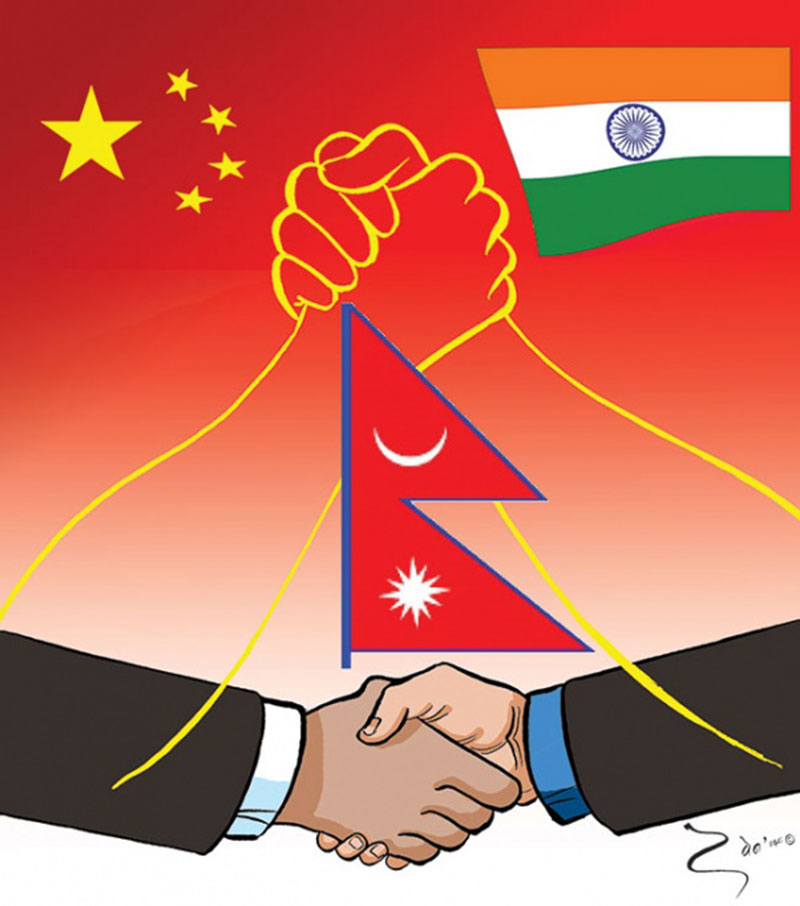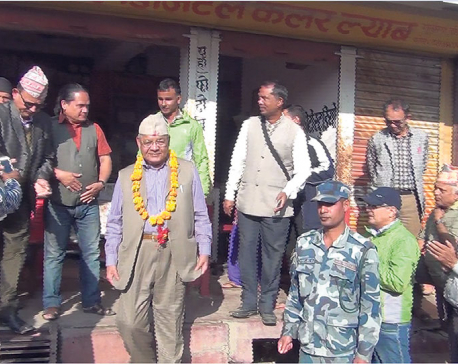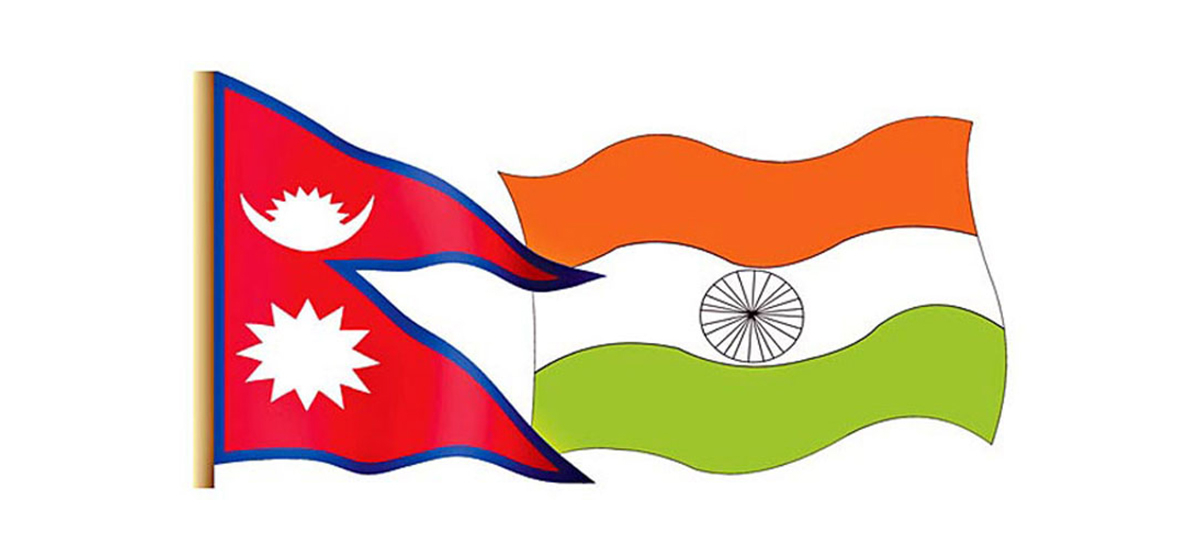
OR

The revised Indo-Bangladesh treaty is an example of how past bilateral treaties can be revised for mutual benefit
The two sets of Eminent Persons Groups (EPGs) from Nepal and India are scheduled to hold their first formal meeting this week in order to lay the foundation to review Nepal-India relations, especially the 1950 Indo-Nepal Treaty of Peace and Friendship. The EPG meet is expected to provide much-needed impetus for treaty revision. However, Nepal’s EPG members should be mindful that the meeting will provide an upper hand to the stronger partner. Revising the treaty is motivated by desires of two countries to build a ‘Comprehensive Strategic Bilateral Partnership’ to meet the challenges of the 21st century world.
First, Nepal’s EPG members need to understand strategic issues of India in Nepal. Essentially, India will continue to view Nepal as a security soft spot so long as Sino-Indian rivalry persists. India-China relation has changed to an extent and it has taken a new form of evolving cooperation in economic areas. Both countries want stable neighborhood. Hence Nepal in particular will have to play great-power games, strengthen its internal security, augment its defense capacity and prove to both countries that it will not let its territory to be used against either power. If Nepal can’t do so, India and China will continue to look at Nepal with suspicion. So long as India perceives China as a security threat, it will continue to view the Himalayas as its de facto northern strategic frontier and reinforce this point on Nepal. Thus India is unlikely to revise 1950 treaty to Nepal’s liking for the fear of altering the status quo.
Second, India’s security interests in Nepal are both exogenous and endogenous. Maintaining border security has been a huge challenge for both Nepal and India. Stemming the flow of terrorists across a long and open border poses monumental difficulty for both sides. The 1950 treaty commits both not to allow their soil to be used against the other. What makes the task particularly difficult is that it is hard to identify who is a terrorist and who is not. Indian security establishment is worried about Nepal becoming a transit hub for Islamist terrorism. In order to address this, India has, for the last five years, unilaterally increased the strength of its Seema Suraksha Bal (SSB) that patrols along Nepal-India borders; in a way, it has started to regulate Nepal-India open border.
India has decided to manage Nepal-India border at its own discretion. India has also tried to renew extradition treaty and sign Air Marshal Agreement between the two countries, but both the proposals have been stalled due to opposition in Nepal. It is evident that India thinks any change in its existing relationship could pose a threat to Indian security interests.
A clear demarcation and efficient patrolling of border areas (rather than any unilateral measures) through improved technologies is essential to improve Nepal-India relation. This needs to be reflected in the revised treaty.
Third, the revision should chart a course to reduce India’s hegemony in Nepali politics. India’s dominant influence is felt across South Asia, more so in Nepal. Direct or indirect Indian interference in Nepal’s domestic political matters—as was evident during constitution promulgation and subsequent ‘blockade’—has hampered Nepal–India relations. Revision of the treaty could allay anti-Indian sentiments among Nepalis.
The 1950 treaty has helped establish India’s hegemony in Nepal. India will probably look to renegotiate to further entrench their hegemony in Nepal for next 50 years. For instance, India could pursue its security interests by pushing ‘One Madhesh, Two Provinces’ agenda, which will ensure India’s hegemony in federal Nepal for years to come. Indian EPG members might push this issue in the revised treaty. We need to be vigilant on this.
Currently, we have three options to 1950 treaty: abrogating it unilaterally, revising it through consultations or letting it die through attrition and neglect. Each has its pros and cons. Hence, EPG members from both sides need to build a ‘non-partisan’ consensus first. This requires further deliberations between two EPGs.
The 1950 treaty is a foundational accord on whose basis other treaties, agreements and understandings have been made between Nepal and India, most of which have helped the latter to continue its hegemony in Nepal. Care must be taken to address Nepal’s sensitivity on twin issues of sovereignty and territorial integrity as well as India’s strategic and security concerns. How this balance will be maintained will largely depend on the will of the leaders of two countries to give fresh impetus to bilateral relations.
Nepal and India can learn from revision of Indo-Bangladesh treaty. This is the perfect example of how revision can be made based on mutual concerns and mutual trust to address shared threats. There is a need, therefore, to update the 1950 treaty to suit the current realities, remove outdated provisions and include new ones to address mutual concerns.
The author is an assistant professor at Kathmandu School of Law
You May Like This

Infographics: 7 leadership styles displayed by great leaders, past and present
7 leadership styles displayed by great leaders, past and present ... Read More...

Populism, past and present
Europe is not alone in being swept up by populism. The US is also in serious danger ... Read More...

Past promises giving leaders hard time in Bardiya
BARDIYA, Nov 13: In the last few years the country has gone through rapid and dramatic political developments. On the other... Read More...



Just In
- 16 candidates shortlisted for CEO position at Nepal Tourism Board
- WB to take financial management lead for proposed Upper Arun Project
- Power supply to be affected in parts of Kathmandu Valley today as NEA expedites repair works
- Godepani welcomes over 31,000 foreign tourists in a year
- Private sector leads hydropower generation over government
- Weather expected to be mainly fair in most parts of the country today
- 120 snow leopards found in Dolpa, survey result reveals
- India funds a school building construction in Darchula








_20220508065243.jpg)








Leave A Comment